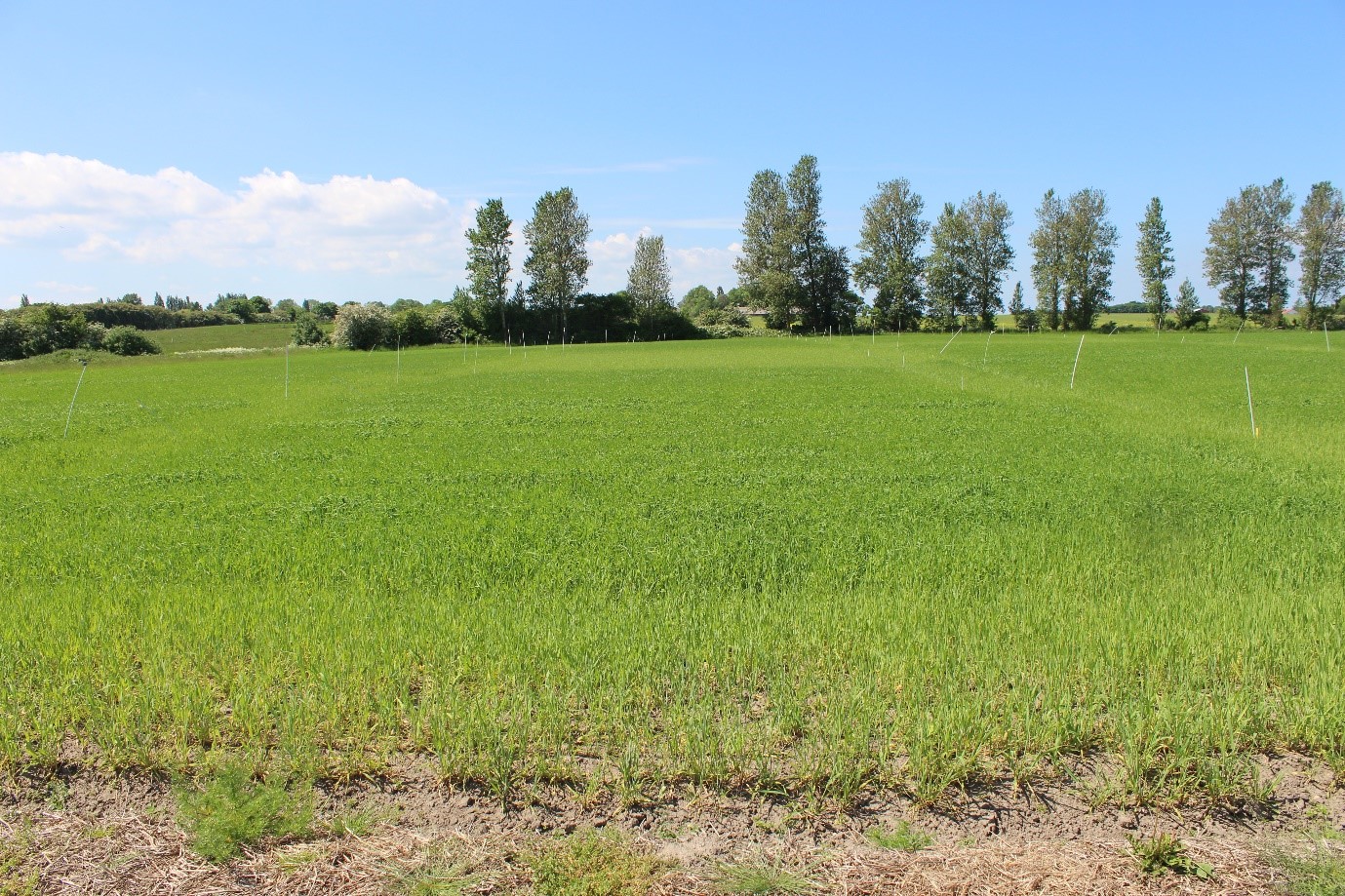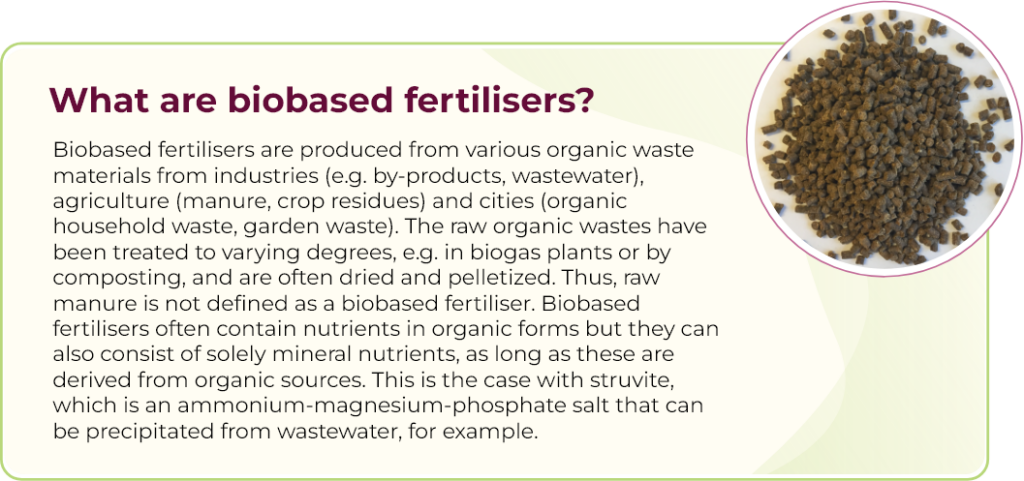Results from field trials in four European countries show that biobased fertilisers produced from a range of societal waste- and side-streams are almost as effective as mineral nitrogen fertilisers. This is good news for farmers, the climate and the environment.

By: Lærke Wester Larsen, Dorette Sophie Müller-Stöver and Lars Stoumann Jensen, University of Copenhagen.
The focus on biomass recycling has increased markedly in recent years. This includes the recycling of organic wastes and residues for fertiliser production. Many new biobased fertilisers have been introduced to the European market, along with a new fertiliser regulation that has come into force in the EU. The aim of this fertiliser regulation is to ensure that biobased fertilisers can enter the market with mineral fertilisers on equal terms. It will also warrant the quality of the biobased fertilisers, making them reliable and safe for the user in terms of efficiency, handling and storage. The regulation further enables certification through the CE-system – an assurance that these biobased fertilisers do not have adverse effects on the environment or contain harmful substances. The new fertiliser regulation is currently under implementation in the member states.

Fertilisation effect
In LEX4BIO project, we tested the nitrogen fertilisation effect of a range of biobased fertilisers compared to mineral nitrogen fertiliser in field trials over two years (with maize, winter- and spring cereals), at four locations in Europe. Seven commercial pelletized solid biobased fertilisers were tested at all locations. Additionally, a small number of local biobased fertilisation products (e.g. biogas digestate, food-industry byproducts or compost) were tested at single sites only.
A total of 18 tested biobased fertilisers showed a relatively high average nitrogen fertiliser replacement value of 71 %. However, the fertiliser efficiency varied widely between the biobased fertilisers. Eight of them had a fertiliser replacement value above 75 %, six had fertiliser replacement values between 60 – 75 %, while only four had fertiliser replacement values below 60 %. The lowest fertiliser replacement value of only 11 % was found for a compost (BVC). Thus, the majority of the biobased fertilisers had nitrogen fertiliser efficiencies equal to or greater than most types of animal manures.

Table: Overview of the ten biobased fertilisers shown in the figure including their abbreviations.
| Abbreviation | Content | Type | Total N (%) | Mineral N (% of total N) | Drymatter (%) |
| BA6 | Pelletized fermented and distilled plant waste | plant based | 5.6 | 1.4 | 91 |
| PAL | Pelletized fermented biochar, clay and rock flour | plant based | 4.9 | 19 | 91 |
| FEK | Pelletized poultry manure | poultry manure | 3.9 | 20 | 90 |
| MO13 | Pelletized feather meal | Animal based | 14 | 1.0 | 93 |
| ECO | Pelletized feather- and blood meal | Animal based | 12 | 2.7 | 89 |
| OG2 | Pelletized and hydrolyzed horn meal, pig bristles | Animal based | 14 | 1.0 | 94 |
| BIO | Pelletized meat- and bone meal, apatite, vinasse, poultry manure, potassium sulfate | Animal based | 7.4 | 3.5 | 94 |
| SDG | Biogas digestate (agriculture- and food waste) | Biogas digestate | 0.4 | 68 | 3.8 |
| BVC | Biogas digested and composted organic household waste | Compost | 1.6 | 8.1 | 56 |
| PCW | Potato cell water | plant based | 1.5 | 16 | 34 |
The residual fertiliser effect of the biobased fertilisers in the subsequent crop was also tested. The results show that the biobased fertilisers had a residual fertilisation effect, although not significantly higher than that of the mineral nitrogen fertiliser.
Effects on soil health
In addition to providing nutrients to crops, the biobased fertilisers can have a positive effect on soil health. In a laboratory study, testing ten biobased fertilisers applied to soil, we assessed biological, chemical and physical soil health indicators. The study showed that the biobased fertilisers overall improved soil health to a greater extent than mineral nitrogen fertiliser. However, large differences were found between the biobased fertilisers. A compost (BVC) improved soil health the most, followed by a plant based (PAL), digestate (SDG) and poultry manure based (FEK) fertiliser. The biobased fertilisers produced from animal by-products, e.g. meat- and bone meal, did not differ from the mineral nitrogen fertiliser in their effects on soil health.
Risk of ammonia volatilisation
The risk of ammonia volatilisation from 39 biobased fertilisers was assessed in a laboratory study where the conditions for ammonia volatilisation were maximized to determine the potential risk of ammonia loss. The potential ammonia volatilisation varied greatly between the biobased fertilisers, both in terms of the total amount of ammonia volatilised at the end of the test period and in terms of when, during the test period, the ammonia volatilisation occurred. The digestates were the only group of biobased fertilisers that showed a high initial ammonia volatilisation from day one of the test. For all other biobased fertilisers, there was a delay before the ammonia volatilisation occurred and the delay varied greatly between the biobased fertilisers.
We could also show that the potential ammonia volatilisation could be effectively reduced by incorporating the biobased fertiliser into the soil, as opposed to applying it on the surface. Moreover, the risk of ammonia volatilisation also varied depending on the soil type on which the fertilisers were applied, with clay soils typically leading to lower potential ammonia losses than sandy soils.
Pros and cons
Overall, our studies identified several trade-offs between the properties of the biobased fertilisers. The compost (BVC), for example, had a positive effect on soil health, but had a very low fertilisation effect. Potato cell water (PCW) was an efficient nitrogen fertiliser but did not significantly improve soil health. Other biobased fertilisers (SDG, PAL and FEK) had both a positive effect on soil health and were efficient nitrogen fertilisers. However, some of these biobased fertilisers also had a higher risk of ammonia volatilisation.
In other words, there are both pros and cons to the different biobased fertilisers and it is not possible to draw general conclusions about them as a group. Which biobased fertiliser to choose depends on which properties the end-user prioritises. However, the most important determinant of their adoption and use will be price and cost of application. Many of the biobased fertilisers are not yet available in large quantities and are therefore relatively expensive per amount of nutrient. Developments in the coming years will show whether the supply of biobased fertilisers can increase to the point where prices will fall to a level where they can compete with mineral fertilisers, which is needed to increase their use. Moreover, an appreciation of their other positive properties would also enhance their use since the fertiliser efficiency is relatively good for most of them.
Thank you to our WP4 partners for collaboration on the field trials: Benedikt Müller, Iris Lewandowski, Torsten Müller, and Andrea Bauerle (University of Hohenheim), Tapio Salo (Natural Resource Institute Finland), Ramiro Recena Garrido (Seville University), Mustapha Arkoun and Aurélien D’Oria (Centre Mondial d’Innovation of Roullier Group).
